Everyone has misplaced something at least once in their life. But there’s a huge difference between losing your car keys and losing a nuclear bomb. That’s right: there are weapons of mass destruction out there that have either been accidentally dropped, or went totally missing.
Many of them are not in danger of exploding, while others could potentially go off at any moment. Of course, every single one of these missing weapons are exposing the surrounding area with high levels of radiation, which means the long-term effects may be just as deadly. The US Department of Defense calls these “broken arrows,” which doesn’t nearly sound as bad as, “Whoops, we can’t find the nukes.” Unlike those car keys, you won’t find any of these weapons under the couch any time soon.
10. The Goldsboro Crash
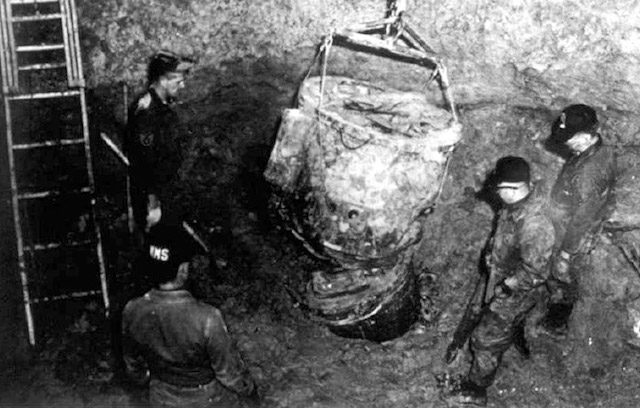
In January 1961, a B-52 was flying over the town of Goldsboro, North Carolina. While it was in mid-flight, the plane’s right wing began to experience structural failure. This issue somehow released two nuclear weapons from the plane, right over this town full of unsuspecting civilians. Both were 3-4 megaton Mark 39 nuclear bombs.
One of the nukes landed without actually detonating, and was recovered. Three men died in the process of trying to recover the nuke and save the town. The second one fell nearby, and not all of the uranium was recovered. So that means it’s hiding somewhere in the woods of North Carolina. For years, the government tried to reassure people that the incident was under control. But newly declassified documents that were released in 2013 revealed that the bombs were very close to detonating and causing a widespread nuclear disaster.
9. Without a Trace
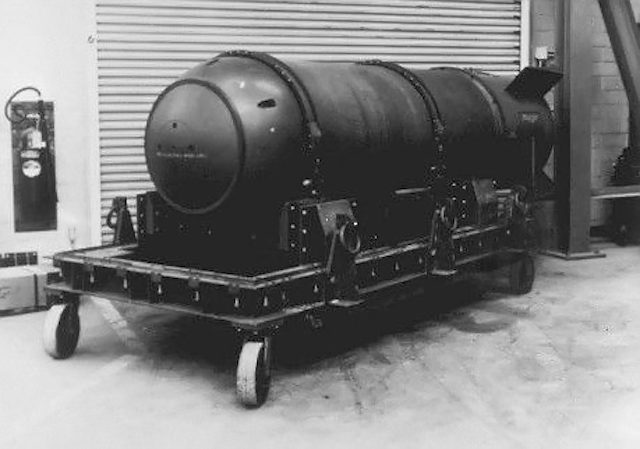
On March 10, 1956, a Boeing B-47 Stratojet took off from the MacDill Air Force Base in Tampa, Florida. They were headed for the Ben Guerir Air Base in Morocco, so the Stratojet had to refuel twice inside of aircraft tankers. Six hours into their flight, they were contacting their third tanker over the radio when the plane suddenly lost communication. They were never heard from again, and the 107-foot long plane disappeared without a trace.
The crash site was never found, and there has never been any debris or bodies of the three men who were onboard. Its last known location was somewhere over the Mediterranean Sea, so it most likely sank to the bottom of the ocean. After enough time had passed, those three men were presumed dead. The plane was carrying Mark 15 thermonuclear bombs, which would have added up to a combined 3.4 megatons. Even to this day, the fate of the Boeing B-47 and its crew remains an unsolved mystery.
8. Close Call Over Canada

On February 13, 1950, an American B-36 took off from the Eielson Air Force Base in Alaska, and it was headed to the Carswell Air Force Base in Texas. During the flight, they began to have mechanical difficulties, which caused three of the plane’s engines to catch fire. Considering that they were flying over Alaska in winter, the conditions were so incredibly icy that they had nowhere that they could safely land.
The pilot could tell that they were going down, and flew out over the Pacific Ocean to try to minimize the damage. Luckily, the Mark IV nuclear bomb that was onboard the aircraft was considered to be a “dummy capsule,” meaning that it was not powerful enough to reach its potential, which is twice the level of Hiroshima. But it was still enough to cause a blinding flash of light, and an explosion. The wreckage of the plane was later found on Vancouver Island, Canada.
For 66 years, the nuclear bomb was missing. But in 2016, a diver finally found the missing nuke while fishing off the coast of Canada. When he first saw the 12-foot wide metal object under the water, he had no idea what this was, and told his crew that he found a UFO. The incident was reported to the Canadian Navy, who went out to recover the bomb.
7. A Watery Grave
On February 5, 1958, pilots from an Air Force base in Florida were sent on a training mission that simulated nuclear attacks with the Soviet Union. They were flying B-47s, which were new and innovative jets. Pilots were required to run a simulation where they pretended to attack the town of Radford, Virginia. During the mission, they flew over the base in Charleston, South Carolina. They had no idea that one of the other planes was taking off, and they had a head-on collision. The pilot, Howard Richardson, had to think quickly about what to do next. He had to fly over the ocean, and drop the Mark 15 bomb off the coast near Tybee Island, just outside of Savannah, Georgia.
The bomb did not detonate, but it still contained massive amounts of uranium. The Pentagon sent the Navy to search for the bomb immediately, but it was never recovered. In 2004, a retired pilot named Derek Duke detected high levels of radiation off the coast of Savannah. The government conducted an investigation, but they believed it was not actually the bomb, and that the radiation was being emitted from minerals in the local area.
6. The Thule Incident
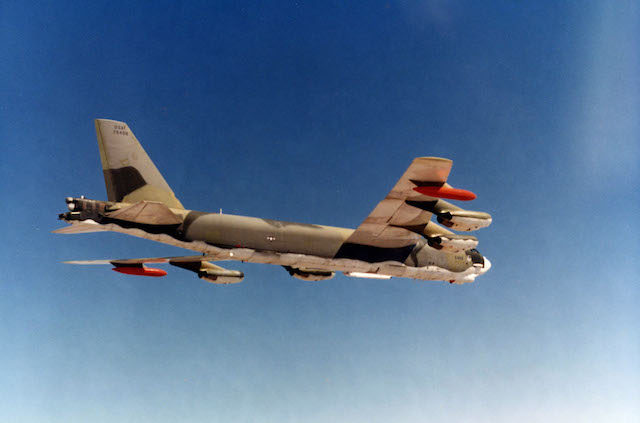
In 1968, an American B-52 bomber was flying over Baffin Bay, Greenland. There were four hydrogen bombs onboard the aircraft. The engines caught fire, and they attempted to make an emergency landing at the Thule Air Force Base. However, they were never going to make it. There was a total of seven men in the crew, and six of them were able to escape. The one bomber, however, crashed into the ice of Baffin Bay.
One of the four bombs exploded, causing the surrounding 250,000 square feet of ice and snow to become contaminated with radiation. As you can imagine, the government of Greenland was not very happy about this, and it severely damaged the two countries’ relationship. The United States began cleaning up the radioactive materials immediately, but the damage had already been done.
So, what about the other three bombs? Ten years after the incident, one of them was recovered, but the other two still sit under the sea off the coast of Greenland.
5. The Mars Bluff Incident

On March 11, 1958, the tiny town of Mars Bluff, South Carolina was having a peaceful day. The birds were chirping, and the sun came up over the horizon. The citizens of the town had no idea that their homes would nearly be obliterated by nuclear weapons falling on their heads.
A Boeing B-47E-LM Stratojet was leaving Hunter AFB in Savannah, Georgia and headed to England in order to practice a mock nuclear weapons test. However, the bombs they kept onboard were very real Mark 6 nukes. The captain was doing a check on the bomb, when he somehow accidently pulled the “emergency release pin.” This caused the bomb to drop on the home of a civilian named Walter Gregg. Thankfully, the nuclear rod had not been inserted into the bomb that day. If it had, it would have wiped out everything in a 10-mile radius. Gregg and his family miraculously survived. He sued the US Air Force, and was given $54,000. With modern inflation, that’s more like $477,000.
4. The Bent Spear at Minot
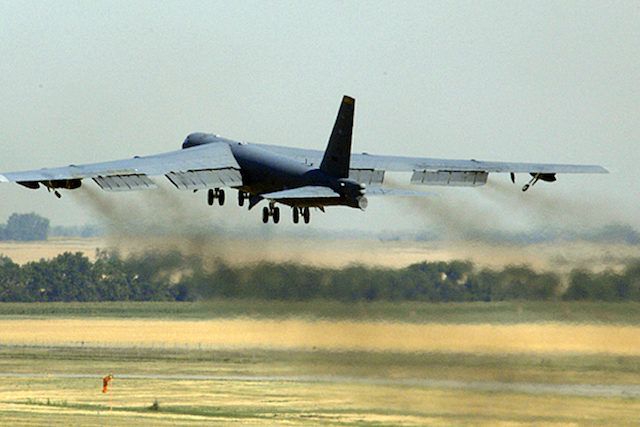
During the Cold War, the United States was stockpiling nuclear bombs just in case they ended up getting in a conflict with the Soviet Union. After World War III never happened, the government had a surplus of weapons they didn’t know what to do with. So when nuclear bombs become out-of-date, they are kept in an underground bunker called a “weapons graveyard.” On August 29, 2007, a group of men in the Minot Air Force Base in North Dakota were gathering 12 supposedly dead AGM-129 missiles to deliver them onto a B-52 bomber. From the outside, all of the weapons looked the same.
The men had no idea that half of those missiles were actually nuclear warheads, because they were never labeled properly. Collectively, those missiles had the power of 10 Hiroshima bombs. Those warheads flew around for 36 hours before anyone was aware that they were nuclear. This story caught the attention of the National Security Council, and they realized just how terrible safety checks truly were, even after all these years.
Technically, this story was about nuclear bombs accidentally being found, rather than lost. But the fact that there are so many of these things lying around that the Air Force can’t keep track is truly disturbing within itself.
3. The Kirtland Cover-Up
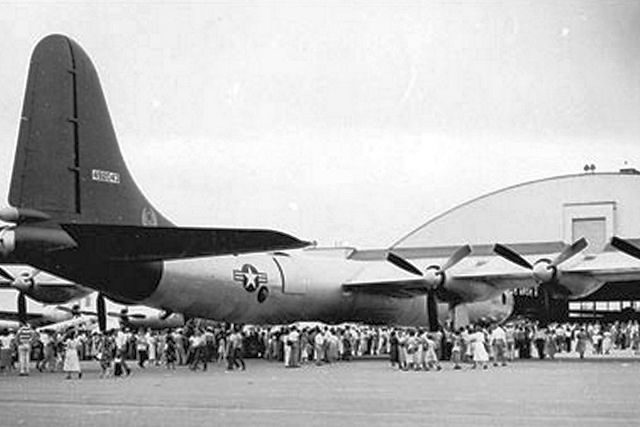
On May 22, 1957, a B-36 bomber left the Biggs Air Force Base in Texas and flew towards the Kirtland Air Force Base in New Mexico, which is just a few miles outside of Albuquerque. A safety release was accidentally triggered when the plane was experiencing turbulence. That’s all it took for the thermonuclear bomb to fall out of the bottom of the plane, along with the bay doors. Thankfully for the citizens of Albuquerque, the state of New Mexico is filled with miles of empty desert.
When the dust settled from the explosion, the bomb created a radioactive crater that was 12 feet deep, and 25 feet in diameter. Experts who analyzed the crater estimated that the bomb must have been 10 megatons, which is the equivalent of setting off 1 million tons of TNT. At the time, the government sent out a cleanup crew. They concluded that there was not a significant amount of radioactivity in the area. The documents remain classified for 30 years.
However, in the 1950s, scientists had a very primitive understanding of fallout. So it’s very possible that this radioactivity could have had even more negative consequences than leaving a big hole in the ground.
2. East Coast Errors

In all of the stories we have told so far, it would seem that these nuclear weapons were dropped completely by accident. Or, when the planes were going down, the pilots bravely did their best to reduce the amount of damage done to civilians. But in this next story, the crew very purposely tossed the bombs overboard in an attempt to save themselves.
On July 28, 1957, a C-124 aircraft was flying towards the Dover base in Delaware when they lost power from two of the engines. This made the plane unable to fly straight. They believed that if they wanted to balance themselves out again, they would need to dump excess weight on one side. The bombs were dropped into the ocean just outside of Atlantic City, New Jersey, and the crew was able to land safely without any casualties. The Navy attempted to search for the weapons, and they could not be found. According to the declassified documents, they should not be in any danger of detonating, but it just might have resulted in some radioactive fish.
1. In Memory of Travis

In August 1950, the United States was in the midst of the Korean War. Ten B-29 bombers took off from the Fairfield-Suisun Air Force Base in California. Each of the planes was carrying a load of Mark IV nuclear bombs en route to Guam. One of the planes began to have engine trouble. It was carrying 20 people onboard, and a man named Brigadier General Robert Travis gave the order to turn around and go back to the base. Before they could land safely, the plane crashed in a remote area on AFB property. Twelve of the men on the crew died on impact.
Air Force personnel ran toward the wreckage and tried to recover the bomb before it exploded, but they were too late. Five thousand pounds of explosives detonated, killing seven more people, and injuring over 180. While this truly was a horrible tragedy, it could have been much worse. If it were not for Travis’ order, the bombs may have detonated over a populated area in California, and the damage could have been far more extensive.
After the incident, the government tried to cover it up, saying that there were not nuclear bombs on the plane, and only “conventional weapons.” However, years later, the truth was revealed in declassified documents. The facility was renamed the Travis Air Force Base, in honor of Brigadier General Robert Travis.